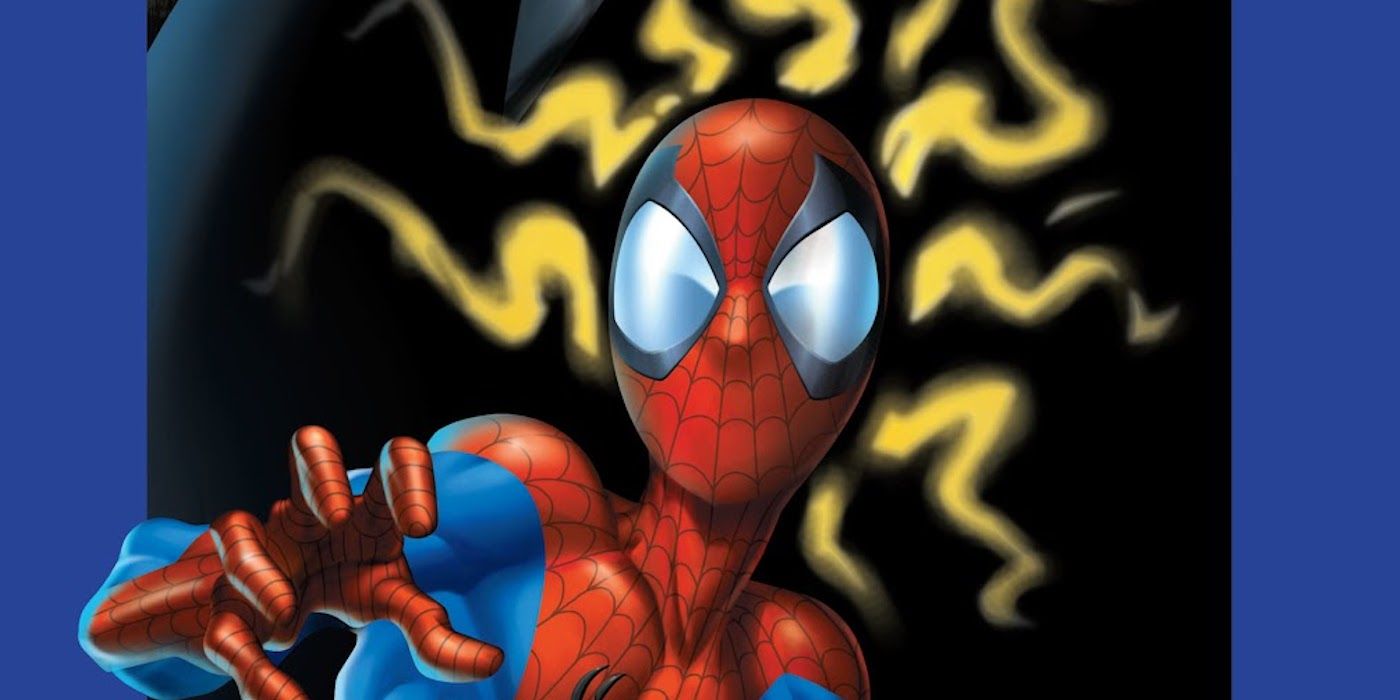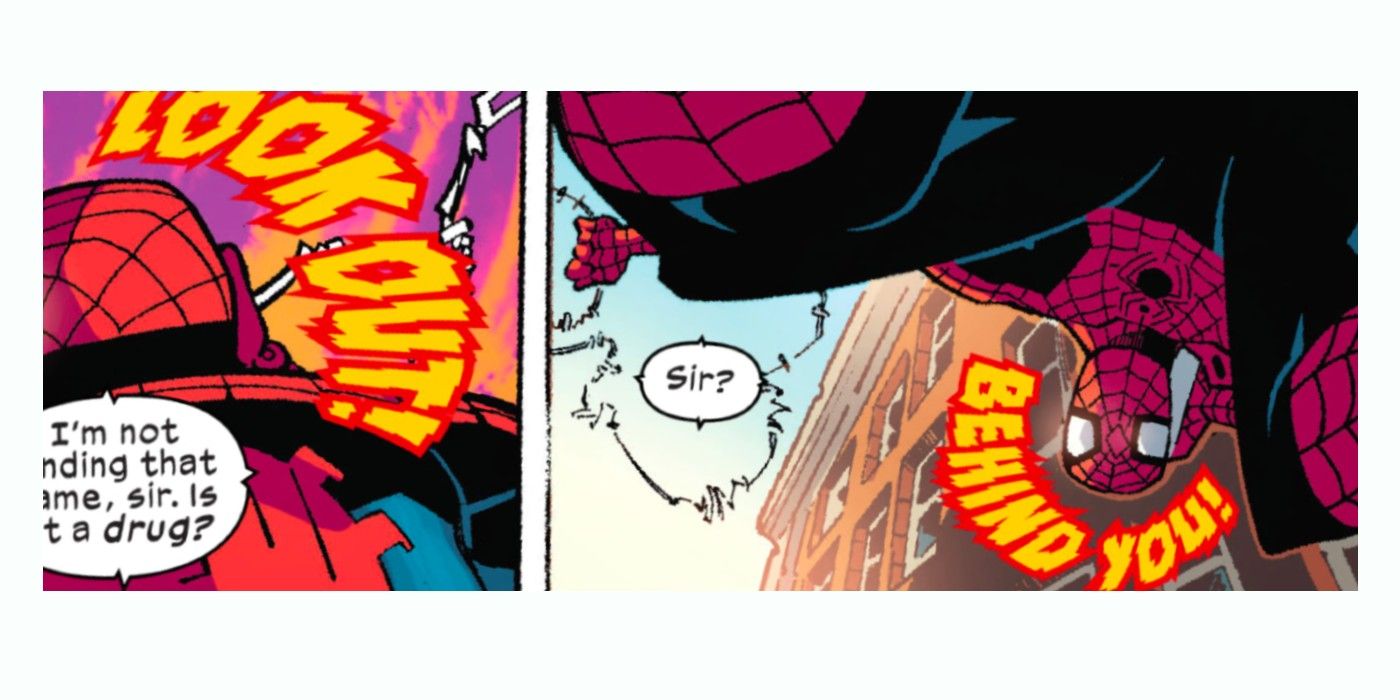Marvel’s new series Non-Stop Spider-Man offers a radical reinvention of how Peter Parker’s spider-sense is depicted in comics, one that almost turns it into a separate character. The spider-sense has been one of Spider-Man’s signature powers since he was first introduced in 1962. Most artists who have worked on the webslinger’s comics over the decades have portrayed the ability the same way original artist Steve Ditko established all the way back in The Amazing Spider-Man #1—as a series of wavy lines surrounding Peter’s head when danger presents itself. In film it is often visualized through the use of slow-motion, or by hairs standing up on Peter's arm like in Avengers: Infinity War.
Non-Stop Spider-Man is written by Joe Kelly with an artistic team comprised of penciler Chris Bachalo, inkers Tim Townsend, Al Vey, and Wayne Faucher, colorist Marcio Menyz, and letterer Travis Lanham. Leaving behind the typical soap opera-esque drama of many of Spider-Man’s tales, this new series is all about action. Spidey is trying to track down who’s behind a drug killing college student. The use of spider-sense in the story and how it is interpreted in the midst of action scenes helps drive the momentum and sense of urgency that the story is aiming for.
As Spider-Man tries to rescue one of his classmates and stop the flow of the drugs, he must dodge attacks from a mysterious masked gang as well as the Zapata Brothers. His actions are largely driven by his spider-sense, as always, which warns him of danger and provides him with intuition on how to react. These first two issues give readers a sense of what this experience is actually like for Peter in the midst of battle. Here the spider-sense is depicted with words appearing over his head, shouting instructions like, “Look out below!” “Behind you!” and “Move fast now!” At times it even appears to be commenting on the action with remarks like, “Uh oh!” and “You got played!”
Throughout Spider-Man’s history, his spider-sense has been able to perform a number of functions in addition to alerting him about imminent danger. He has been able to use it to track people, often in tandem with his custom spider-trackers that he will attach to someone he wants to follow. It also doesn’t just flare up when he is about to get hurt, but will warn him when he’s about to receive bad news or when someone is lying to him. It varies in its effectiveness, as sometimes it allows him to dodge every blow in a fight, while other times it doesn’t. But beyond simply using the wavy lines around his head to indicate to readers that Peter's spider-sense is active, the comics have not really delved into how he experiences the sensation of this power. The use of actual words communicates how Spider-Man receives information from this extra sense and how he always knows what to do with it. It also adds a new visual dynamic that grabs the reader's attention.
There have been several stories that explain the spider-sense as being mystical in nature, from J. Michael Straczynski’s run to recent Spider-Verse stories that tie it to the cosmic Web of Life and Destiny. The use of words instructing Spider-Man what to do and where danger is coming from in the heat of battle evokes the idea of someone watching over Peter and guiding him, almost like a guardian angel. Whether this is intentional or not remains to be see, but using the spider-sense to not only show danger but also to comment on the action gives it a degree of characterization that has not been seen in Spider-Man comics before. Here’s hoping that future issues of Non-Stop Spider-Man will continue to offer new and unique interpretations on Spider-Man’s classic powers.


